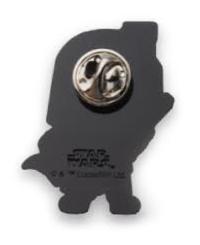
(Bonus points if you catch the title is a reference to a direct quote from Blazing Saddles, itself a reference to the Treasure of the Sierra Madre.)
JewelryBrands is headquartered in the United States and has offices throughout the world. This means that we have staff that speak different languages, but it also means we interact with many people who speak the same language differently.
It’s pretty commonly known that, say, “Spain Spanish” is different from “Latin American Spanish.” In Japan, many English terms have been integrated into Japanese, but even English speakers in Japan might use English terms differently than in English-dominated countries. For example, Japanese menus translated into English say “Hamburger Set” to denote a burger with fries and a drink. Neither the US or UK seem to use that phrase, but it’s still an accurate and logical use of English words. Of course, different English speaking nations have different words, or use the same word differently.
A well known example of this is “chip.” The oversimplification is that a British “chip” is what Americans call a French Fry. (Not helping matters is the fact that fries as Americans understand are not French.) Both are fried potatoes, but different kinds of fried potatoes. What Americans call a chip, or specifically a potato chip, is what people in the UK call a “crisp.” That’s not to say Americans don’t have potato crisps, those are fried items made from potatoes, but only after being processed and shaped, like with Pringles. This would be confusing enough, but as US based companies expanded to the UK, there are now places where one can get fries- which refer to the thin cuts of fried potato common in fast food- as opposed to British chips being more like what Americans might call “steak fries.” Of course, to say “chip” presumes “potato chip” unless in the US where one might specify “corn chip.” “Fries” imply “French fried potatoes” even though there are numerous fried items.
Even in the same country speaking the same language, one thing might have different names, even if they don’t differentiate anything. A groundhog is the same animal as a woodchuck, and may also be called a “whistlepig,” which also applies to prairie dogs. Some people apparently call them “Land Beavers” but I have never met those people. Likewise, a mountain lion is also known as puma, catamount, and cougar.
TL:DR language is complex.
SO, this brings us to Badges, Buttons, and Pins. These are three different words, each of which can be applied to both the same thing, and different things entirely.
Look at these items:

These things can be called pin-back buttons, pinback buttons, pin buttons, button badges, pin-backs, buttons, or badges, depending on where you are.. Every one of these apply. The item in question is basically a surface with a safety pin or other wire pin, which usually clasps closed. These are usually made with a thin clear material protecting a paper image pressed into a metal disk that is connected to or crimped around the wire, but can also be made out of plastic, or have the image otherwise presented on the object.
What makes this even more complex is that this sort of button is not exactly the same as buttons that are used both functionally and decoratively on clothing- the things made of bone, plastic, metal, or other materials- which are sewn directly onto the clothing item. You know these things, you button up some shirts and jackets, there’s one at the top of most jeans. You know, buttons.
“Badges”, on the other hand, can refer both to the pin-back item, but also a cloth item that is transferred or sewn onto an item of clothing. This item may also be called a patch. We don’t sell patches.
“Pins” can refer to the item we’ve been discussing, but also refers to decorative items with one or more short, straight pins sticking from the back, which are clasped to clothing or a bag with a back fastener. This specific sort of pin is often called a “Lapel Pin” because of where they are usually worn. Of course, “pin” can also refer to a pushpin, or the pins used in sewing. An example is this item below:

If you think of the other definitions of the words, you can consider how a badge is more of a concept- as in the book, “The Red Badge of Courage.” So, the badge is the concept being expressed. The button is the item, and the pin is what holds it on.
Hopefully, this has been informative, but perhaps you’re even more confused. No worry, whatever you want to call them, we do have a large selection of these accessories, although generally what we have are “lapel pins” even though you can wear them on other parts of your clothes, or for that matter, on a backpack or other bag, put them on a tapestry, or whatever you can think of to do with a small ornament that has a spikey bit.
But first you need to GET a small ornament that has a spikey bit! That’s where we come in! We have a wide selection of lapel pins depicting imagery from all over the pop culture universe! We even have a variety of pins that light up!
Say you like the idea of ornaments that you can decorate your clothes with, but it’s the pin part of lapel pins that concerns you? Do you want something more modern, safer, perhaps more scientific? Well then we have something special for you, this selection of MAGNETIC pins, which use magnetism to hold the pin to fabric without risking a pinhole or risking poking you or those nearby.

So, much as a rose by any other name would smell as sweet, a pin by any other name will look as stylish, and we’re here to keep you fully styled with pop culture pins and other accessories.

